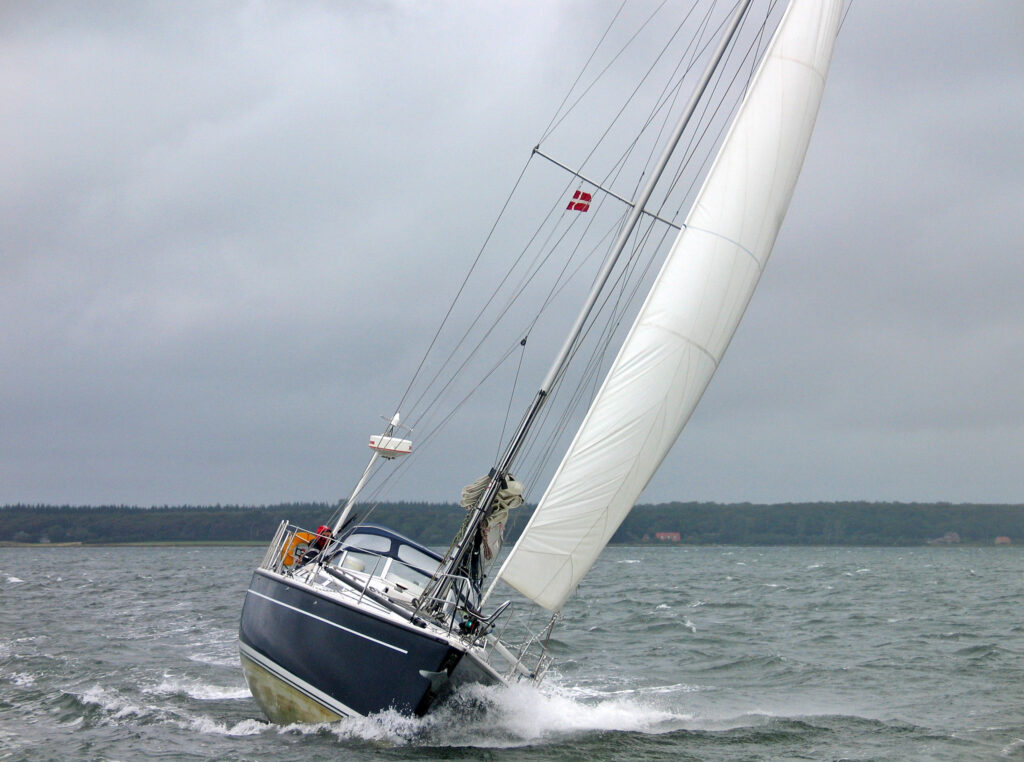
I have been sailing multiple times when the boat heeled over. It is an awesome feeling when you heel over. There have also been times when the boat heeled over and I was a little nervous about it capsizing.
Boats will begin to heel when there is enough force from the wind pushing on your sails. When heeling over, boats will have a better angle through the water creating more speed. Each boat is different and has a different optimal heel angle.
There is a lot of information when it comes to heeling over that you should be aware of.
How Much Should a Sailboat Heel?
As a general rule, the heel angle should be between 10 and 30 degrees. If the heel angle becomes greater than 30 degrees, it will increase the chances of capsizing.
Smaller boats will always be more prone to capsizing. They have less weight in their keels and the keel is what helps balance your boat. Balance is key when it comes to heeling over.
There are no guarantees that a boat will not capsize, although it is not very common.
A 22-foot sailboat can heel over so far, that the sails will lose all wind causing the boat to reduce its heel and gain its wind back. This will usually happen before the boat actually tips over.
Take a look at this video. At minute 4:34, the boat will heel over too far and the mainsail will start to flutter as the boat takes on water. The boat will bounce back up because of its keel and the mainsail will fill back up with wind.
Larger boats have a heavier keel and will be more sturdy when heeling over. I have been on a 30-foot Hunter Cherubini, where we sailed with the rails in the water for roughly 20 minutes.
This boat had a 4100-pound keel weight. The captain was never worried about capsizing due to the build of this boat. The keel is a crucial part of the boat when heeling over.
What Is The Purpose of a Keel?
The main purpose of the keel is to keep your boat balanced while sailing. If your boat is well balanced, it will have more speed through the water. It will also help prevent your boat from tipping over.
Keels carry the ballast, which is a large weight. They can weigh anywhere from 100 pounds to 5000 pounds and sometimes even more. They are an essential part of your boat and sailing without one would be nearly impossible.
My first sailboat (Catalina 22) had a swing keel for use with shallow water. This was a great learning opportunity for me. I was able to see how a boat handles with a keel versus how a boat handles without a keel.
Keels come in a lot of different shapes and styles. See the list below for the different types of keels.
The Different Types of Keels
- Full Keel – Runs the full length of the boat
- Fin Keel – A common keel, attached to the center of the boat
- Winged Keel – Has a shallower draft for shallow waters
- Bulb Keel – Keeps the ballast at the lowest point possible
- Bilge Keel – A boat with two keels on the bottom, this allows for an upright position at low tide
- Swing Keel – A keel that can be raised and lowered. Common on smaller boats.
All of these keels have advantages and disadvantages when it comes to sailing. For most people, having a specific keel will not be a priority when purchasing a boat.
How Do I Stop My Sailboat From Heeling? (Personal Experience)
There are multiple ways to stop your sailboat from heeling. The best way to stop the boat from heeling is by letting out your main sail. The alternate way to reduce heeling, is by turning into the wind more. Both of these options will reduce heel, by reducing wind pressure on your sails.
I have been in multiple situations on my boat when I was nervous about the heeling angle. I have used both of the options listed above and they both work great.
The first time I experienced heel on my boat, I was in a beam reach. The wind picked up suddenly and my boat began to heel about 35 degrees. This was my first time by myself in a heeling boat. It was a bit nerve-wracking. I turned into the wind pretty hard and the boat heel reduced itself pretty fast.
As I have sailed a lot more since then, I tend to heel quite a bit these days and see how far I can push it. The more you do it the more comfortable you become with it.
